We spent 10 days in Gdańsk (Gdansk) in August at the start of our 3-months-long road trip across Europe. Even though this time we embarked to this journey with our little boy, we still explored off-the-beaten locations besides the kid-friendly sights. Let us show you our favorite spots in and around the Tricity (Gdańsk, Gdynia, Sopot). We even made it to the end of the Hel Peninsula!
* For other kid-friendly cities, check out this list! *
This post may contain affiliate links.
Day and half-a-day trip ideas for exploring Gdańsk:
1. The Old Town
Without a doubt, Gdańsk has an old town worth a visit. You will walk among historical, mostly renovated, brick houses and churches. The most famous street is Długi Targ. If you have limited time go there to discover the nicest townhouses. The city lies in Vistula river delta on the shores of Martwa Wisła, but the old town surrounds the Motława river. One of the most iconic city gates is Żuraw, the gate that features a harbor crane from Middle Ages. It represents the biggest and the oldest preserved harbor crane in Europe.
You can self-guide yourself with guides like THIS or THAT one. Or use a cheap audio tour.
Opposite to the Żuraw gate, Ołowianka island spreads on the other shore with antiquated granaries (some turned into hotels) and a new opera house. However, the most interesting for us was a museum ship, Sołdek. It was a coal and ore freighter, the first one built in Poland after World War II and the first seagoing ship finished in the country. The ship was named in honor of one of the shipyard’s shock workers.
But what to do, if you have enough of the swarms of tourists and you would like to rest in a calmer area?
2. Stocznia Gdańska: old harbor and industrial area
Some minutes walk towards north from the Old Town leads you to the old shipyard area. Wandering around the streets, you will be surrounded by typical industrial landscape left after Stocznia Gdańska (Gdańsk Shipyard). The cranes are towering over the halls. Some of the buildings are abandoned, but many are nowadays still occupied by smaller companies. The shipyard still functions on a smaller area on the Ostrów island and under the different name. When exploring the industrial area it’s worth to check the old shipyard’s gate which is right next to the Solidarity Museum.
3. The villa district of Gdańsk
The city has a beautiful villa district, Wrzeszcz, about 10 minutes ride northeast by tram from the old town. We were renting an apartment in one of those charming houses. Nowadays they are divided into several flats unless they give a home to diplomats. Several embassies you will encounter while wandering around, and the old Technical University surrounded but tiny wooden buildings are also located in this district. Recommended spots for taking interesting photos in Gdańsk.







4. Parks of Gdańsk
You can easily spend a day visiting the greens in Gdansk, and we didn’t even consider the Zoo to this timeframe.
4.1 Park Jaśkowej Doliny
If you like to feel yourself in a big forest, explore Park Jaśkowej Doliny next to the villa district. It’s hilly and full of trees and quite wild without asphalt paths, but in the middle, you will find flat areas, playground, and benches.

4.2 Oliwa Park and Cathedral
My absolute favorite park was the Oliwa Park. A little stream was meandering across the park giving space for kids to enjoy the fresh water during the hot day. The famous Oliwa Cathedral on the northern side, a tiny Japanese garden on the southern part, and, the best part of the park, a lengthy alley under the trees represent the highlights of the place. The alley looked magical during August already, but nothing can beat the early autumn colors.

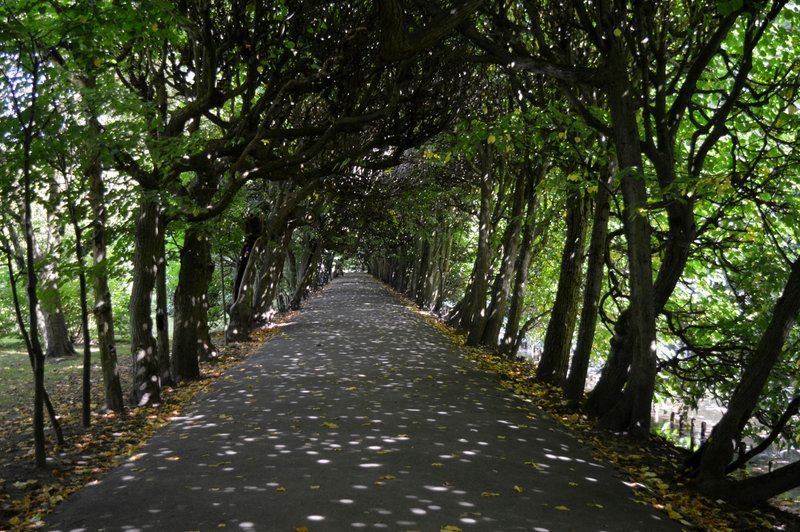

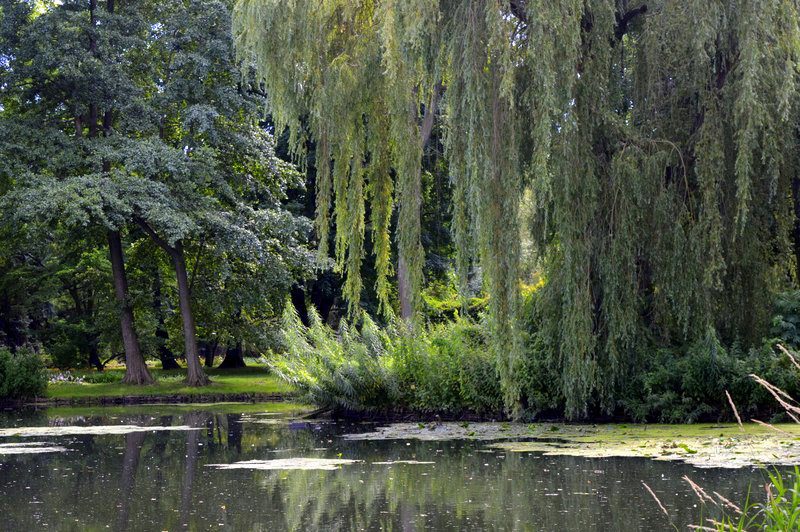
5. WW2 memorial locations
5.1 Polish Post Office
Polish Post Office was opened in the Free City of Gdańsk, but its buildings were extraterritorial Polish property. The building of the post was attacked on 1st of September 1939 by German troops. The postmen defended the area for several hours fighting against SS, SA and police units. The unequal battle lasted for about 13h when Germans finally managed to capture the major part of the main building except for the basement. Yet the defenders refused to surrender. That time the attackers decided to pour gasoline to the basement and start a fire by a hand grenade. After 3 people burnt to death, the director of the post office decided to surrender and went out of the building carrying a white flag. He and the second person to leave the building were shot. The rest of the defenders were captured. Few people managed to escape the building.

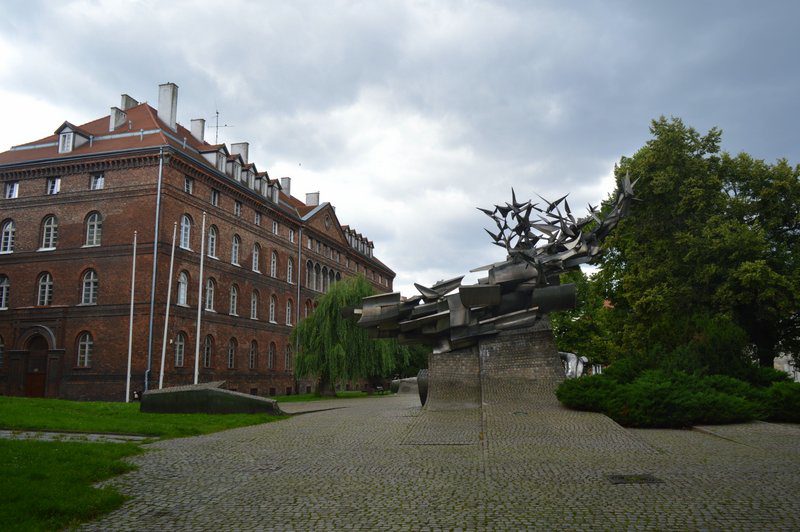
The prisoners were later executed after being put on trial by the German army’s martial court. They were found guilty of being partisans as they were not part of the Polish army. The four people who managed to escape from the building survived the war. The Polish Post Office case was not the only one. The similar fate awaited Polish railway workers who prevented Germans from using an armored train in the south of Gdańsk. The families of the postmen were prosecuted as well. In 1979 the Defenders of the Polish Post Monument was unveiled in front of the restored postal building.
5.2 Westerplatte
You can visit the Peninsula where the Second World War started. Bunkers, monument and a lot of green areas cover Westerplatte. It is a must-see place for those interested in history and the second World War. Westerplatte’s peninsula is a 10-minute drive away (or 1 hour by bus 106 or 138) from the center of Gdansk.
On 1 September 1939, the German battleship Schleswig-Holstein opened fire to the Polish garrisons and this event marked as the first battle of the WW2. You can walk among the remains of barracks and guardhouses. One of them is converted to a tiny museum with displays about the war.
In the middle of the spacious green area, the Monument of the Coast Defenders (Pomnik Obrońców Wybrzeża) stands to commemorate of the victims of the war. It’s also a good spot to look over the island and Gdansk in the background.


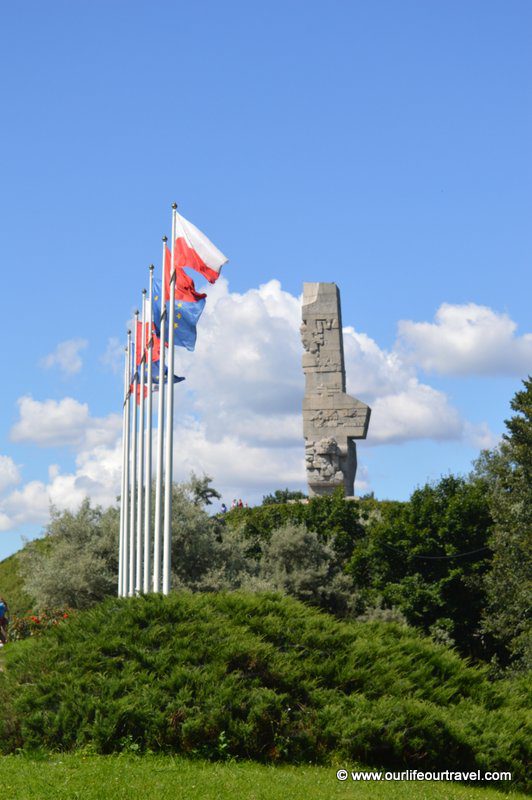



6. The beaches on the Baltic Sea and the world’s longest wooden pier (Trip to Sopot)
On a hot summer day, make sure, you pay a visit to the beaches as well. If you use public transport, the beaches of Gdańsk or Sopot are the best choices for you. Although the water is rather cold, you will see locals enjoying the summer and swimming and playing in the water. The beaches are sandy and trees border them to give you a refreshing shade if you need.
As you are already at the beach, don’t forget to take a look at the wooden piers. In Gdańsk, there is a smaller one which can be visited for free. In Sopot, the world longest wooden pier can be visited for a small fee. It’s open 24/7 and usually crowded during the peak season.
7. Beaches and lighthouses on the Polish seaside: the legend of Cape Rozewie
In case you have more time, the beaches up north are well worth visiting too. Beech forests around the cape, pine forests on Hel peninsula, steep shores, sandy beaches. Oh, and the lighthouses that guard the passing ships on their way to the harbors in Gdańsk and Gdynia. We visited lighthouses in Rozewie and Hel.
Cape Rozewie is next to Jastrzębia Góra that is the most northern point of Poland on land. The lighthouse has the biggest range of all Polish lighthouses (26 nautical miles). The legend says that a Swedish ship sunk next to the cape and only captain’s daughter survived the incident. She made bonfires every night till she died so that no other ship would share the faith of the one of her father’s. A curious fact about is that lighthouse keepers from 1920 to 1980 were three men from the same family: father, his brother and brother’s son.
The latter lighthouse in Hel is 9 m higher having a tower 41.5 m high. The first one in this location was built already at the beginning of the 19th century, but it was blown up by Polish troops defending the peninsula in 1939 in order to make targetting more difficult for German artillery. It was rebuilt in 1942 by Germans.
8. The Hel Peninsula day trip: beaches and bikes
It is a 35 km long peninsula in the Baltic Sea, made from sand and covered by sand dunes. It’s not only long, but it’s one of the most incredible spits on Earth. On the narrowest part, it is only about 100 meters wide. Perfect place for cycling along it, although the car traffic is significant due to the high number of tourist who comes for the beautiful beaches. Also, the most famous Polish nudist beach is here on the northern shore next to Chałupy.


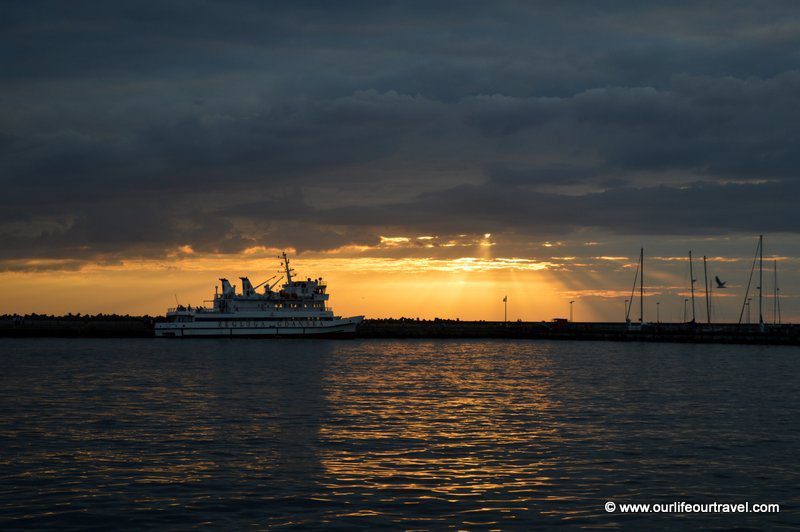
9. Malbork Castle
Malbork Castle a.k.a the Castle of the Teutonic Order in Malbork is the biggest castle in the world. It has the largest area, as well as is the biggest brick castle. Not surprising that it belongs to Poland’s Unesco World Heritage Sites and one of its National Historic Monuments.
It’s only half an hour by train from Gdansk (or a bit longer time by car).
Not only Poland, but Malbork Castle has a stormy history. The castle changed owners several times: Teutonic Knights Western Royal Prussia, Poland, and Germany all owned it for shorter or longer times. For almost the 2 centuries while it belonged to Germany (and its German name is Ordensburg Marienburg). It was only returned to Poland after the end of the World War when it got heavily damaged.
Since then, the renovations are continuously ongoing, but they restored many parts of the castle and easy to imagine how magnificent they looked once! Just check out the interiors, the Blessed Virgin Mary Church or the statue of Teutonic Knights in the yard.
Grab your city guide NOW
Gdansk Travel Guide: Sightseeing, Hotel, Restaurant & Shopping Highlights
Where to eat Polish food on a budget in Gdańsk
Are you hungry after all-day the sightseeing? The cheapest places to find Polish food are the so-called milk bars. In this type of restaurants you can choose from several dishes and you will often pay by weight for your lunch. It gives you an opportunity to taste a variety of, mostly, local dishes. Of course, it’s far from a middle-class restaurant serving, but I never was disappointed. The variety of dishes and relatively cheap price make it worth.
We tried the following places: i-100 gram and Bar Akademicki, both located in Wrzeszcz within walking distance from our accommodation. Make sure you eat several types of pierogi.
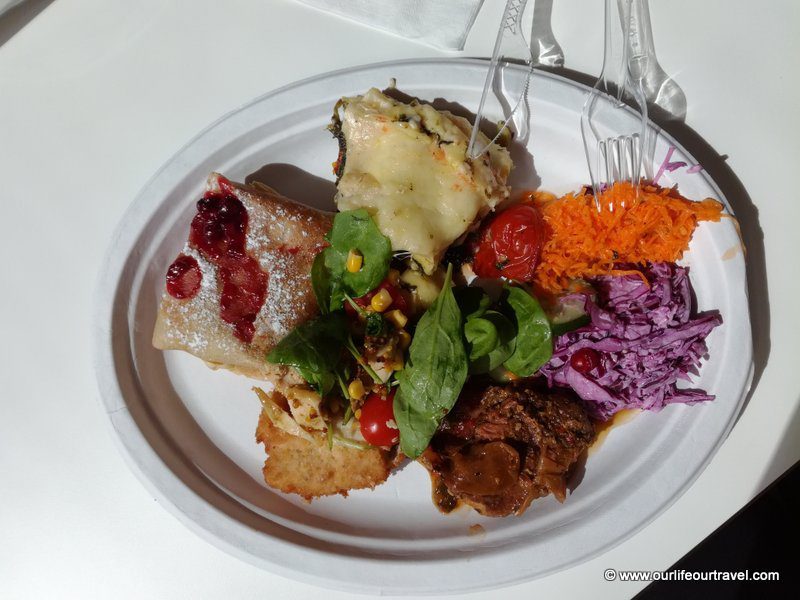
Pin it for later!

Note: This post may contain affiliate links.






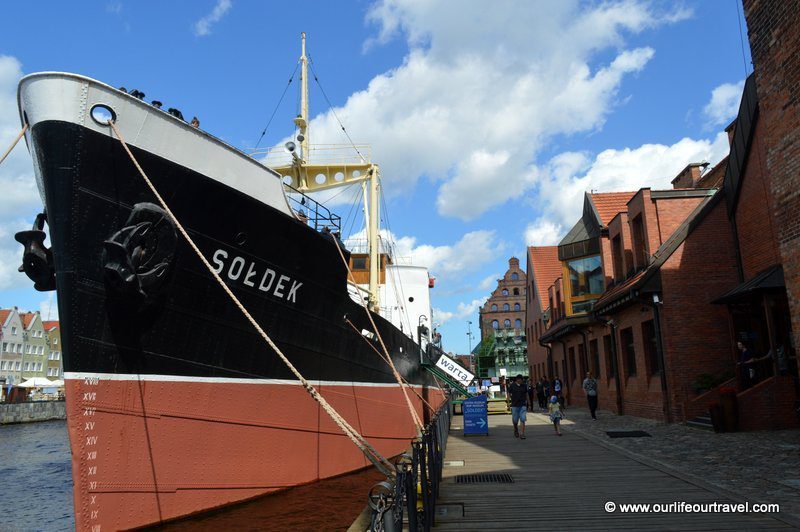













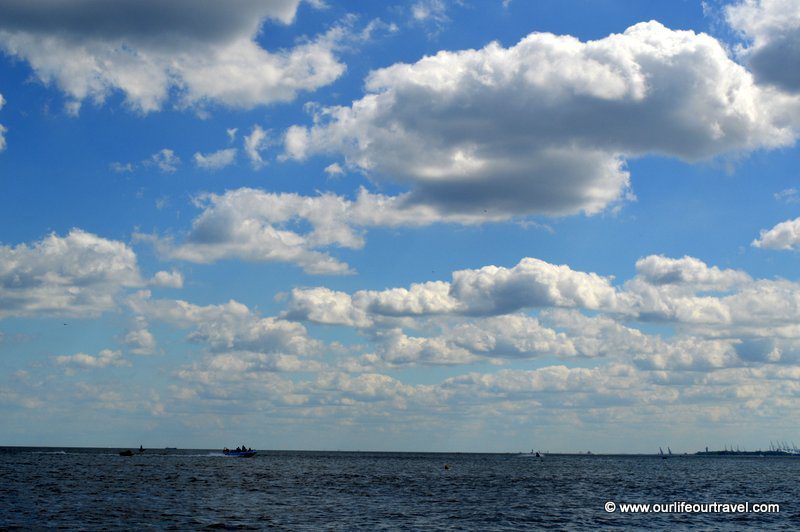


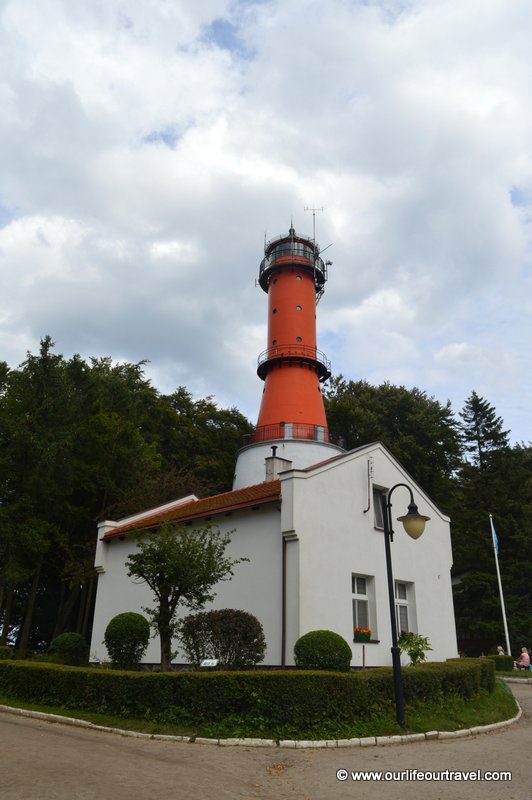

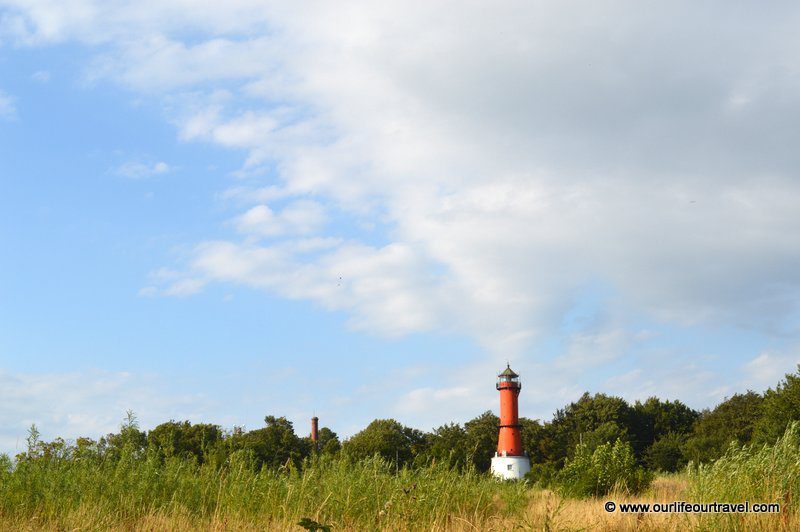
Pingback: Kid Friendly Cities in Europe for Spring Vacation - Our Life, Our Travel
Pingback: Traveling with a Baby in Europe by Car - Must have Items for a Road Trip
Pingback: Photo diary of a visit to Łódź: city full of art and textile factories - Our Life, Our Travel